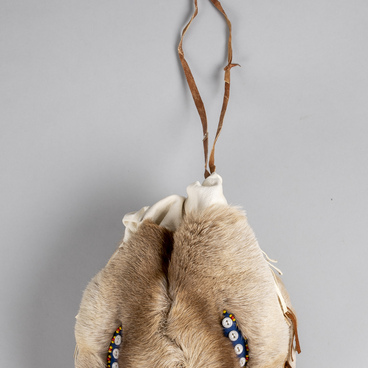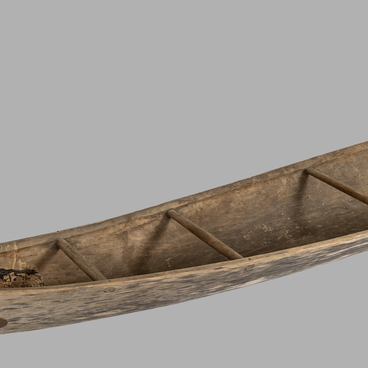Nyriki (niry, nyary) are traditional Khanty boots. The soles of nyriki boots are sewn directly to the bottom of the foot. Men, women and children wear such boots. Nyriki boots have a flat sole, a round toe and a long bootleg. The foot part is made of deerskin or fur, the calf is made of various materials: tarpaulin, cloth, corduroy, etc. Tall and soft boot calves are tied with straps to special fasteners on the belt. At the ankle level, between the foot part and the long calf made of fabric is a rectangular strip with a linear-geometric pattern assembled from pieces of painted and unpainted leather. The mosaic fragments of the pattern are sewn from the inside with thin tendon threads using zigzag stitches. The stitches at the front are so finely and carefully done that the mosaic parts blend in with each other almost seamlessly.
In her book “Khanty and Mansi: a Look from the 21st Century”, Zoya Petrovna Sokolova describes these shoes worn by Ob Ugrians as follows:





